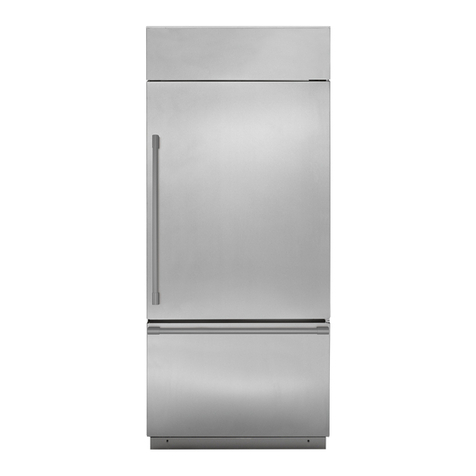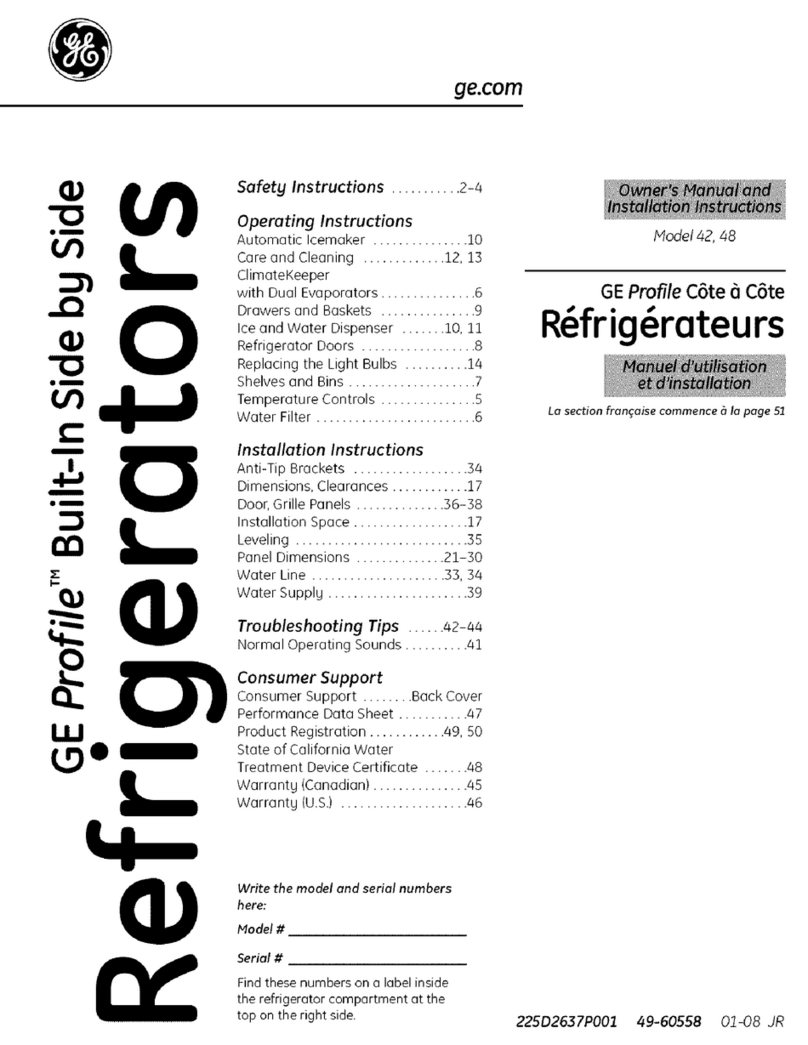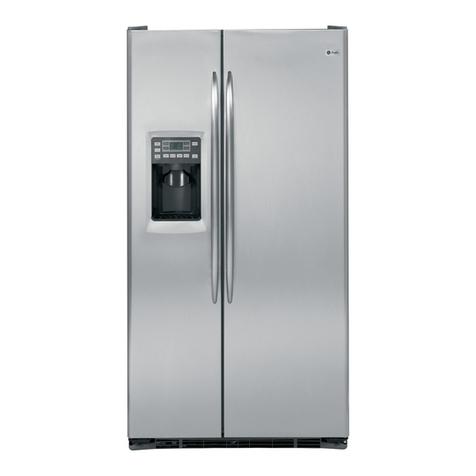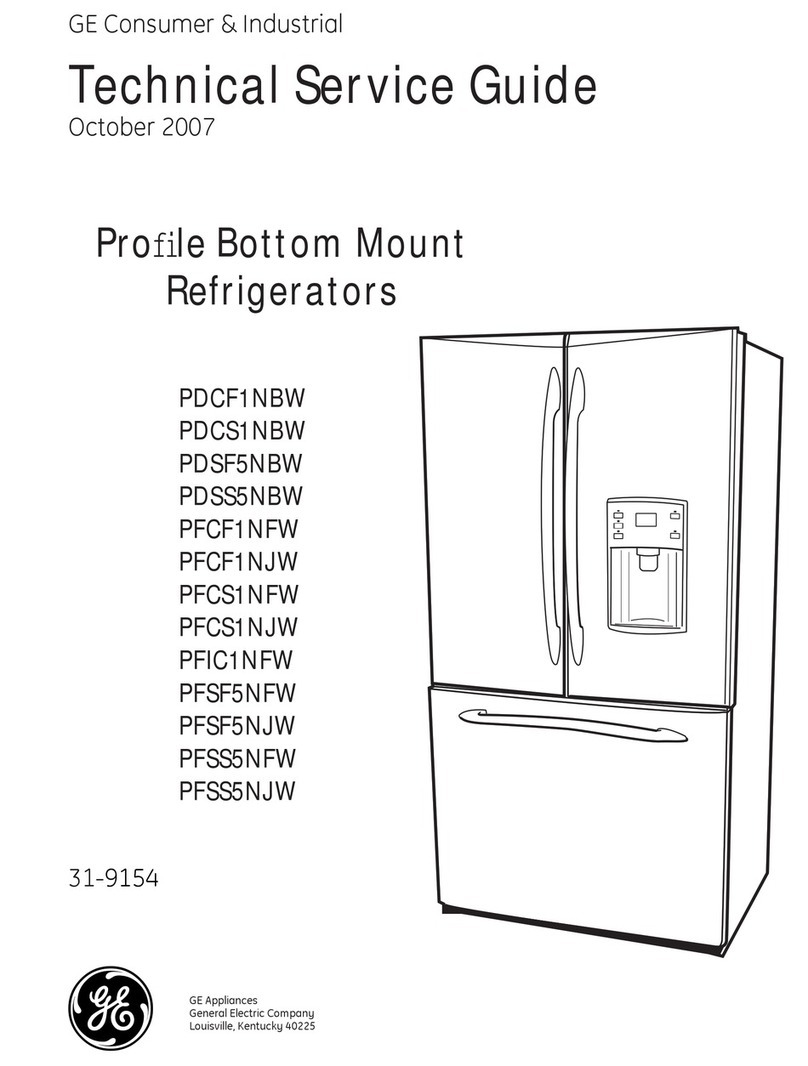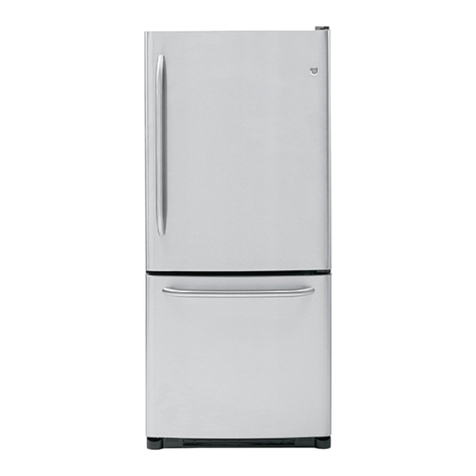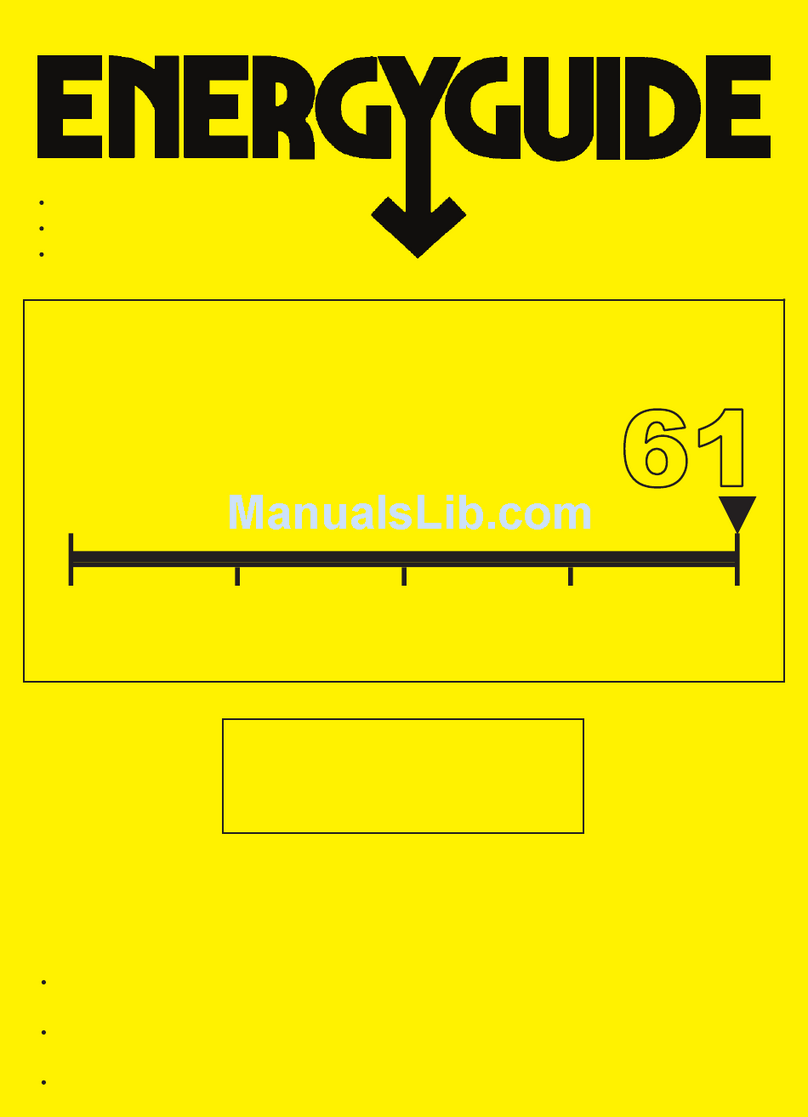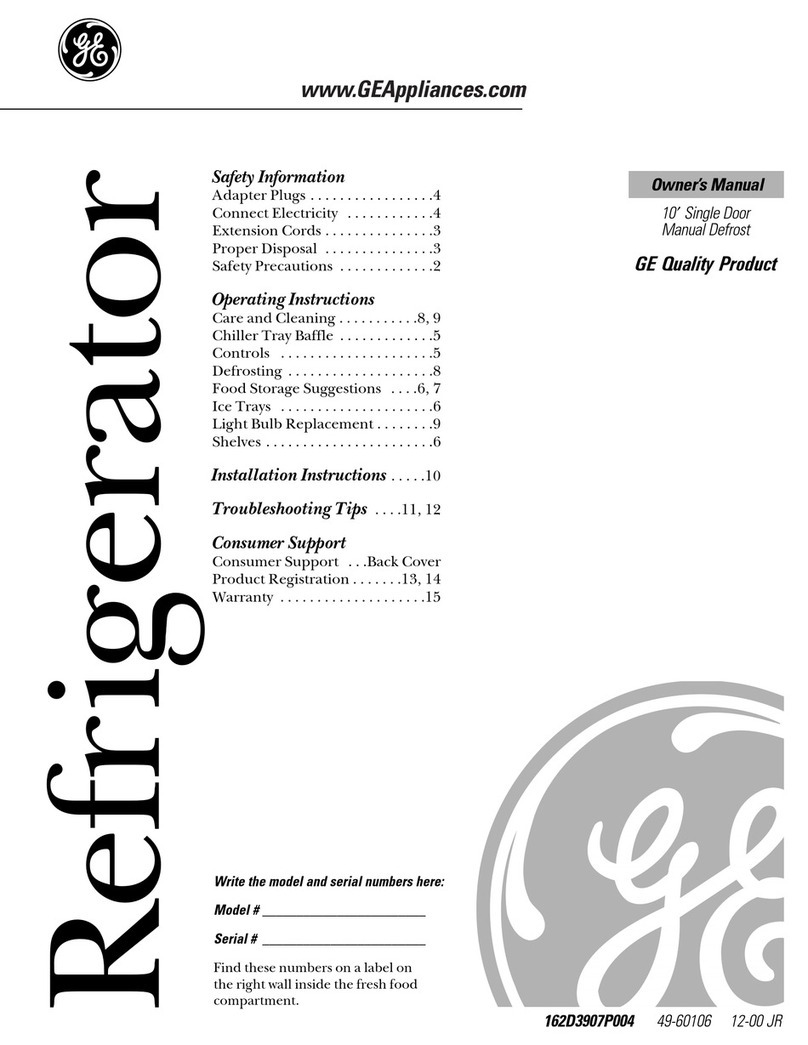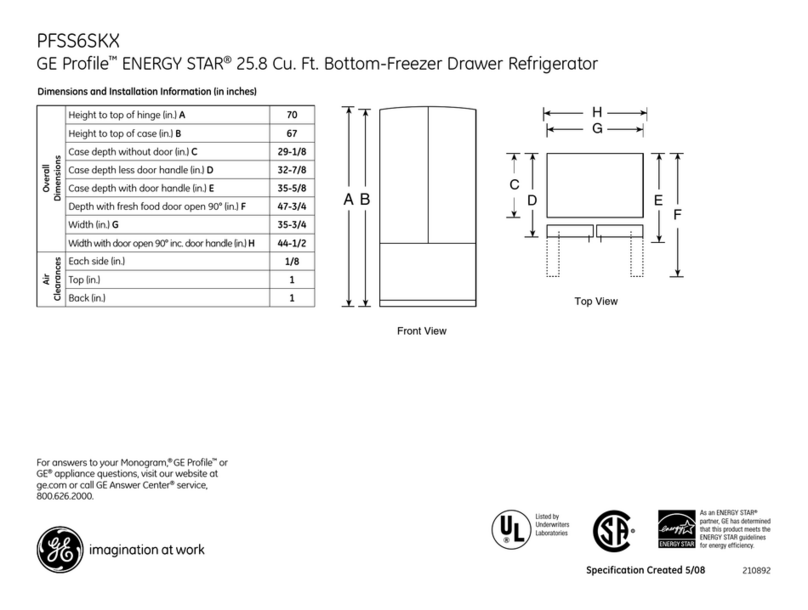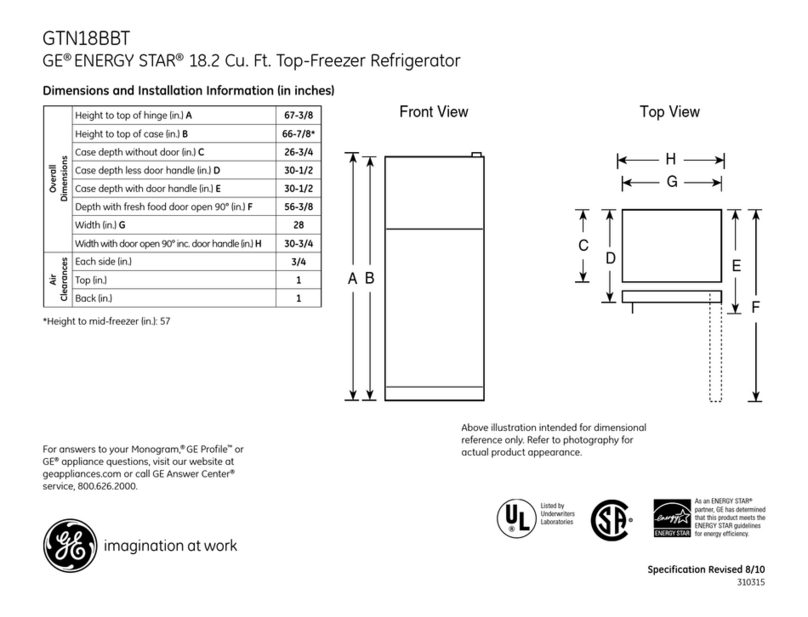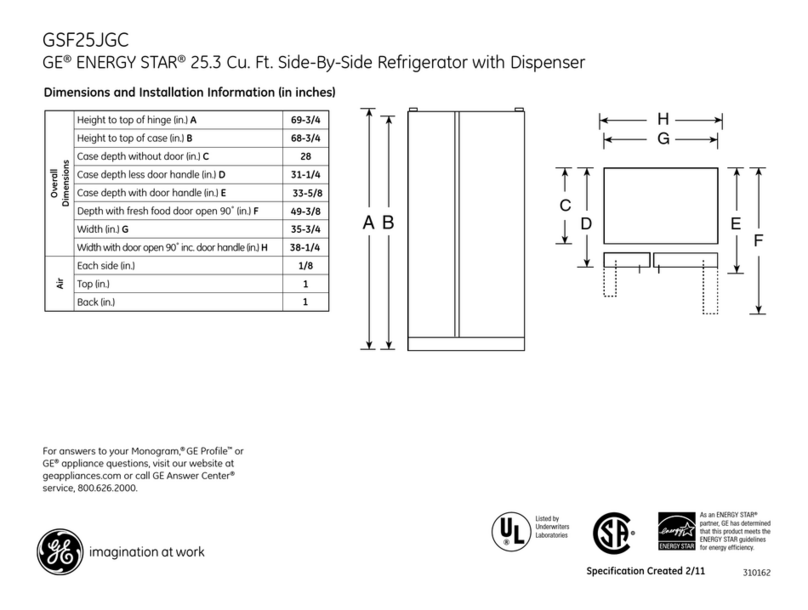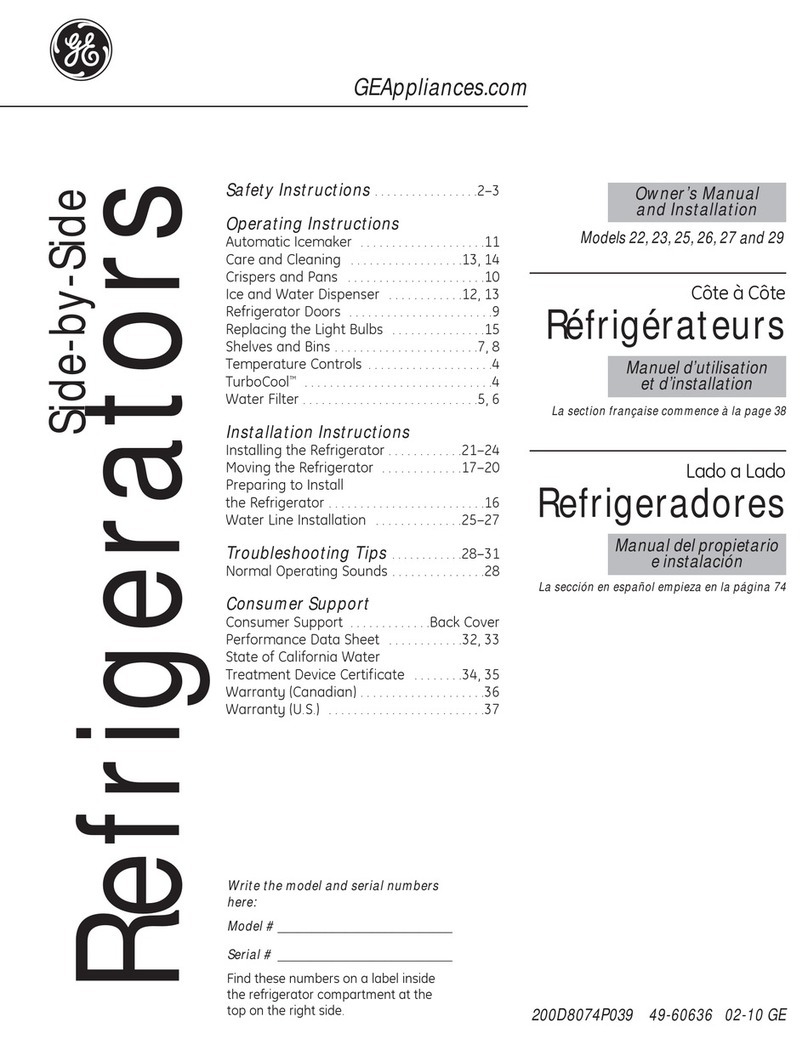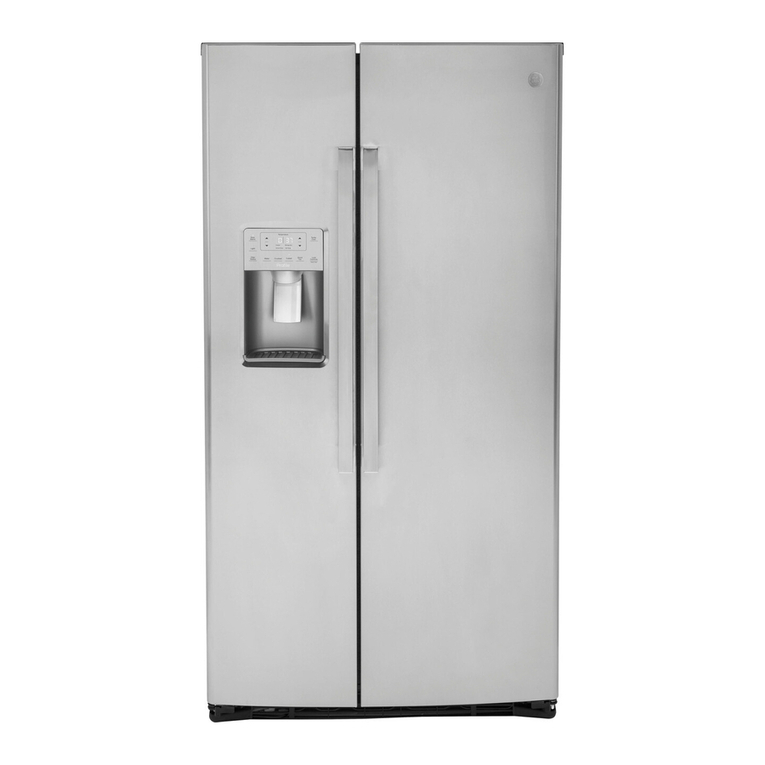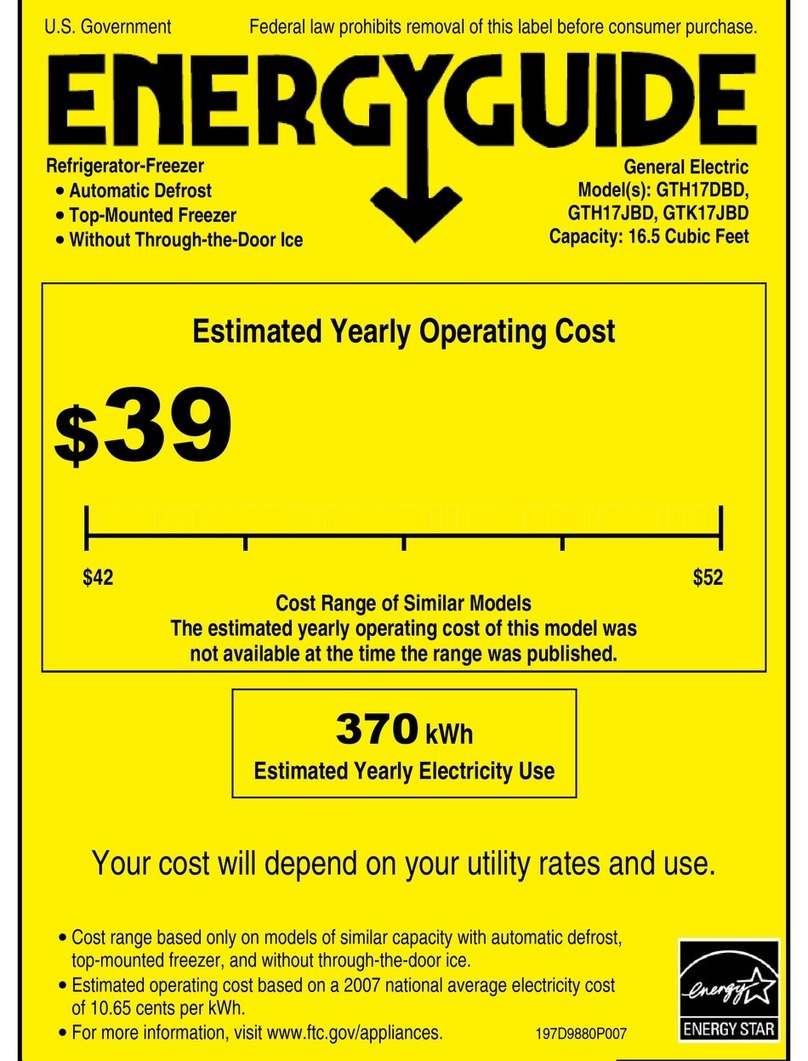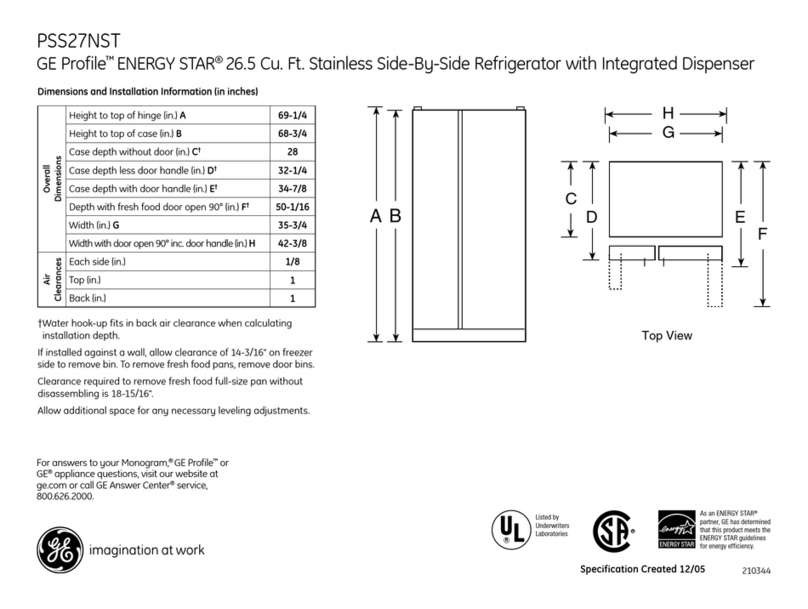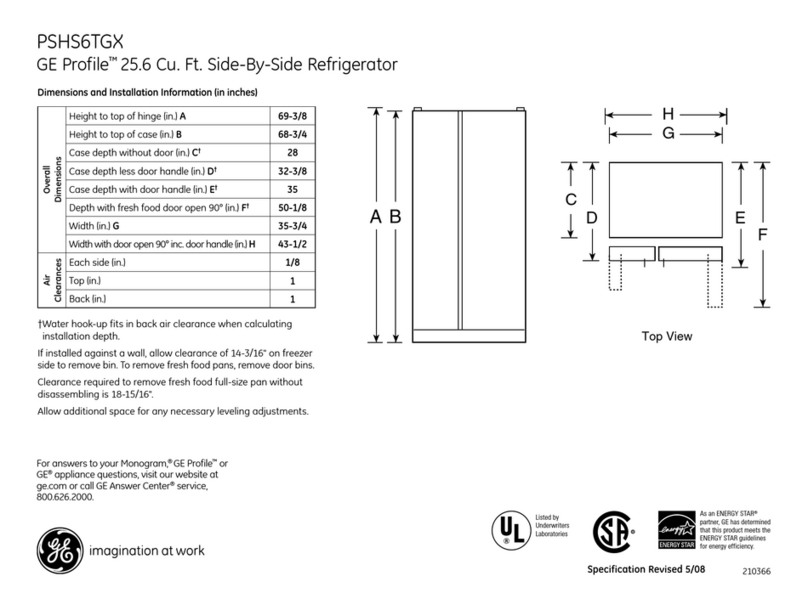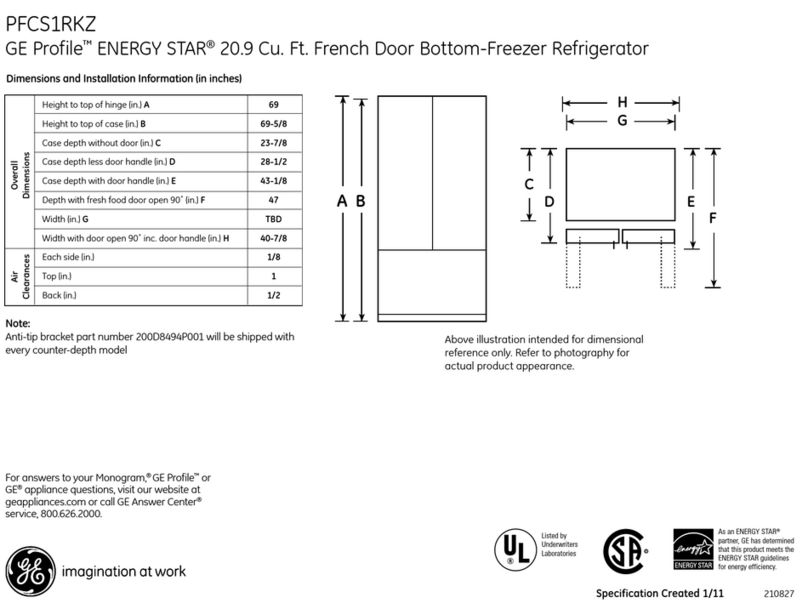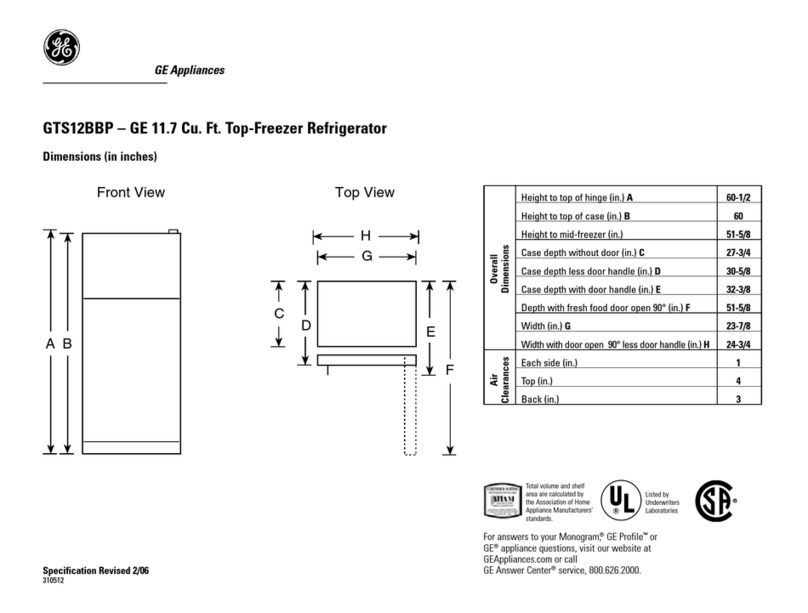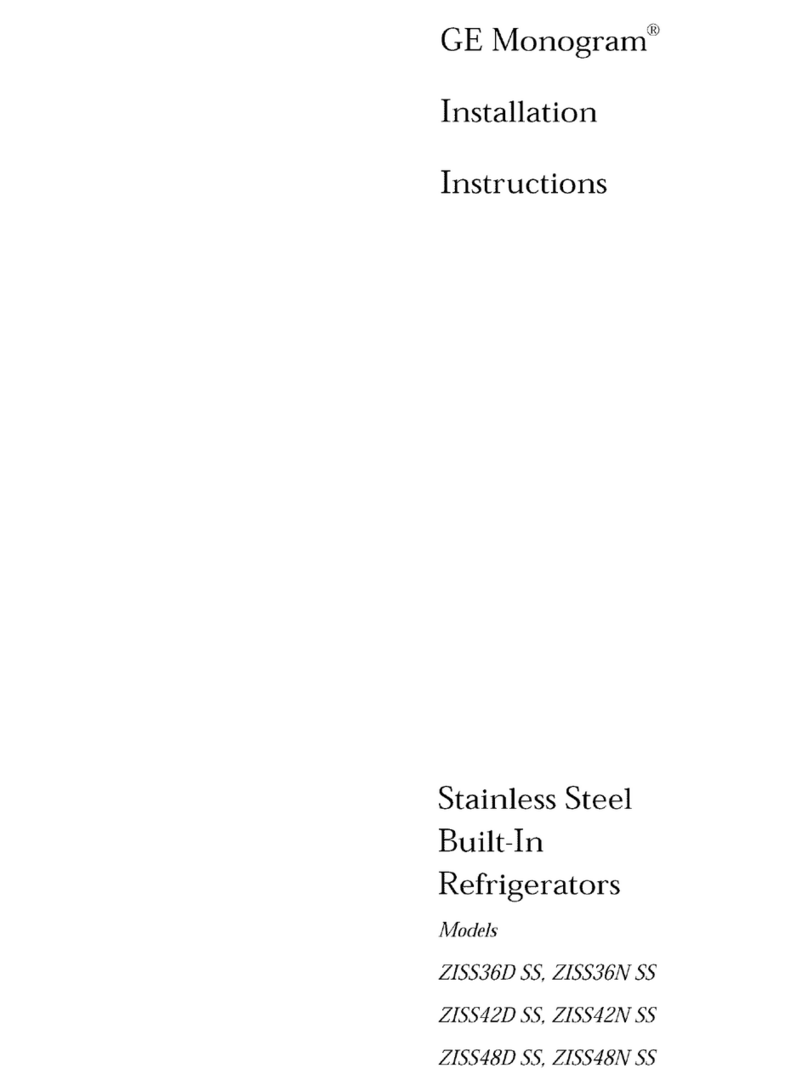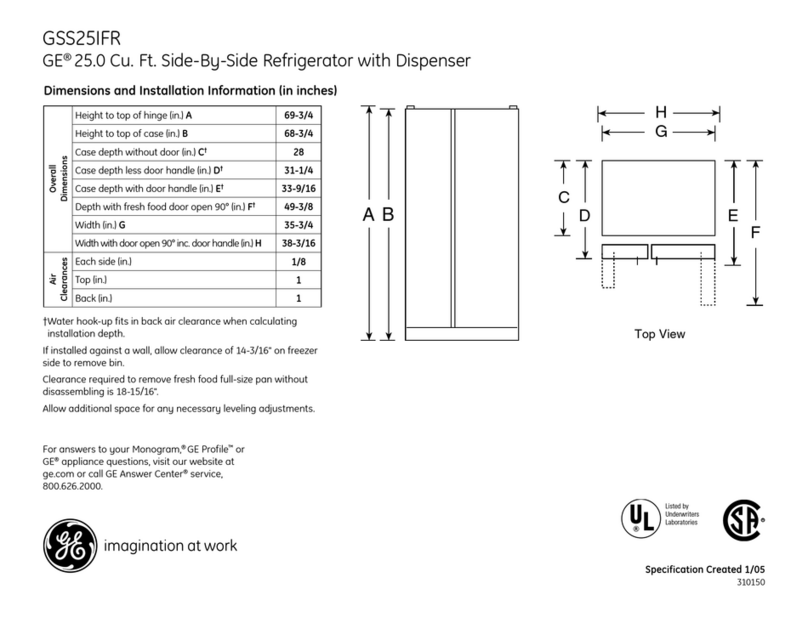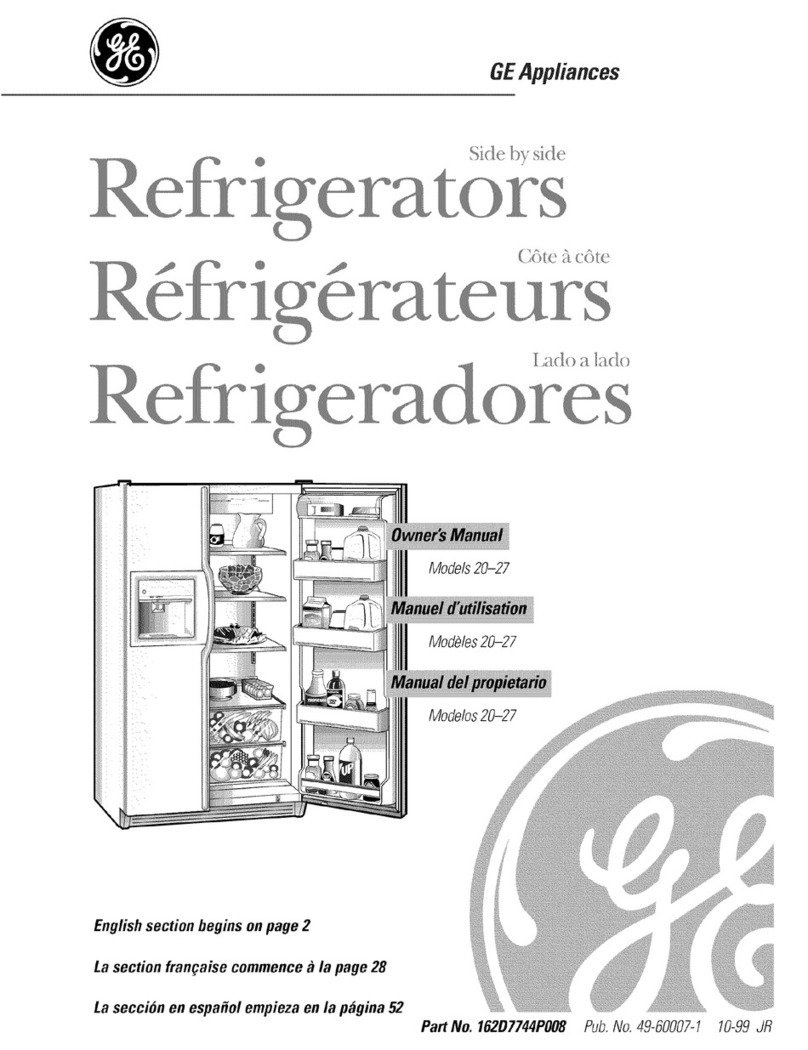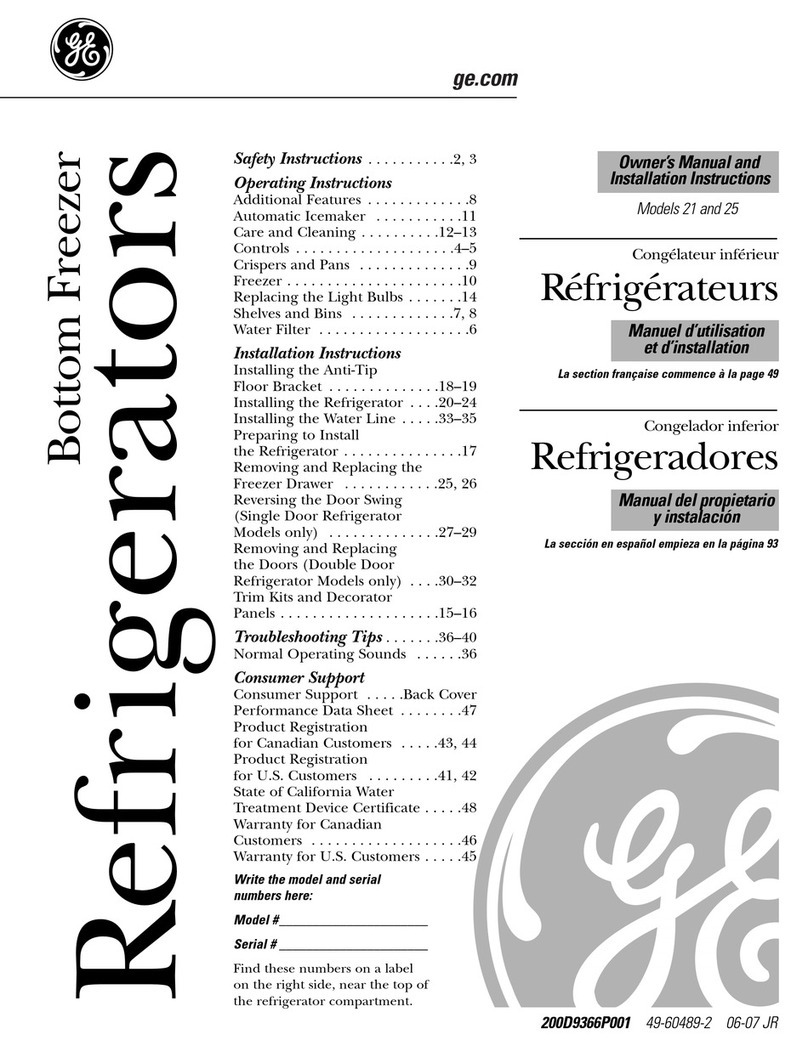3
SAFETY INSTRUCTIONS
Avoid installation on wet floor or place
with high humidity and moisture.
• Electric insulation gets weak, resulting in
the risk of electric shock.
Let the cord from the plug direct down.
• If it directs up, the cord near the plug will be
bent and damaged, which can cause
electric shock or fire.
Check if plug is loose from the wall socket.
• Electric insulation gets weak, resulting in the
risk of electric shock.
Never let the power cord touch or pass
over heating appliances.
• Power cord can be damaged, resulting in a
risk of electric shock.
Do not place containers with water or
liquid on top of refrigerator.
• Water may spill on the refrigerator and can
cause electric shock or damage.
Never pour or spray water onto
refrigerator (both interior and exterior).
• Electric insulation gets weak, resulting in
a risk of electric shock.
Do not move or remove compartment
shelves/pockets while foods and
containers are placed on.
• Hard container (of glass, metal etc.) can fall
to hurt and can break shelf glass and
interior parts.
Young children should be supervised to
ensure that they do not play with the
appliance.
Do not let children hang on the refrigerator
doors.
• Refrigerator can fall and injure them.
The appliance is not intended for use by
young children or infirm persons
supervision.
Never store any flammable gas or liquid
in the refrigerator.
Never use flammable gas, benzene,
thinner, gasoline, spray etc. near the
refrigerator.
• There is a risk of fire, explosion and
personal injury or damage.
If gas leak found near the refrigerator or in
the kitchen, ventilate it immediately
without touching power plug or
refrigerator.
SAFETY INSTRUCTIONS
